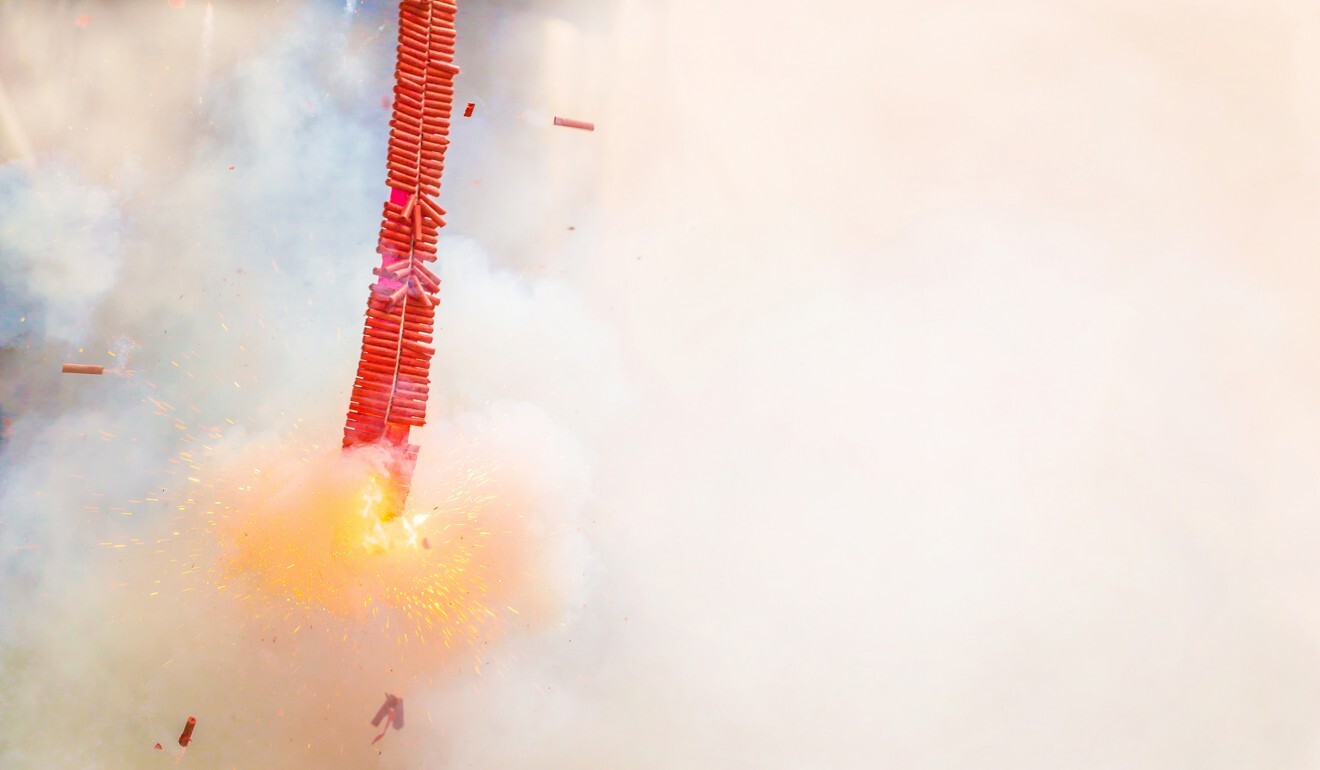
Lunar New Year fireworks blamed as heavy smog blankets Chinese capital
- Beijing and dozens of other cities record high levels of deadly particles with air quality indexes of more than 200
- Many factories are shut for the holiday but the authorities say firecrackers set off to celebrate the Year of the Ox are responsible
Beijing and North China were blanketed in heavy smog for a third consecutive day on Saturday, as the government blamed fireworks set off to celebrate the Year of the Ox.
Serious air pollution has been recorded in several provinces in northern and central China, which the environment ministry said was unlikely to disperse until Monday.
As of midday, the Air Quality Index (AQI) released by the US embassy in China showed that the average concentrations of lung-damaging particles known as PM2.5 had reached a “very unhealthy” level of 232 in Beijing.
On Thursday and Friday, 47 cities across China reported heavy air pollution, with an AQI of over 200. Thirteen of these, including Beijing and Baoding and Shijiazhuang in the neighbouring province of Hebei reported severe air contamination with an AQI reading higher than 300, according to the environment authorities. In Xianyang, a city in Shaanxi, the AQI hit 500 on Friday morning.

“The burning of firecrackers and fireworks have a notable influence on the air quality,” the ministry said on its website.
To prevent disease transmission after sporadic Covid-19 outbreaks were reported in north China, the central government encouraged people to stay put and avoid long-distance family reunions during the Lunar New Year holiday which started on Friday this year.
While a great many people followed the advice, the latest round of smog took many off guard and forced them to further modify their holiday plans.
China’s smog-prone areas see clearer skies but pollution worse elsewhere
“I’m choking in the grey haze,” Zhuo Hang, a 32-year-old middle schoolteacher in Beijing said. “I cancelled the trip to my hometown in Anhui weeks ago, and now I have to cancel a trip to climb a mountain in Beijing suburbs. It’s the dullest Spring Festival ever.”
Internet users flocked to social media to write down their feelings and post pictures of buildings and roads blanketed in smog. “When I opened the window this morning, I was shocked by the scene of a smoggy city like the bad old days of years ago,” one wrote on Weibo. “It’s bleak and depressing. While industries are shut for the holiday, why is the smog so serious?”
Chai Fahe, a researcher from the Chinese Research Academy of Environmental Sciences, told Beijing Youth Daily that discharges from power, steel, petrochemical and other heavy industries were high levels because they were still operating during the holiday, while coal-fired heating and firecrackers had also had an impact.

Setting off firecrackers to scare away bad fortune is a traditional way to celebrate the Lunar New Year, but many local authorities have banned their use in inner city areas to reduce accidents and pollution.
In Beijing, their use has been banned in large parts of the capital, accounting for around a third of its total area. Official data also suggests the number of fireworks on sale has fallen by around a quarter.
However, the environment ministry said the use of firecrackers in the neighbouring provinces, including Hebei and Shandong, was intense in the past couple of days and had an evident effect on Beijing.

